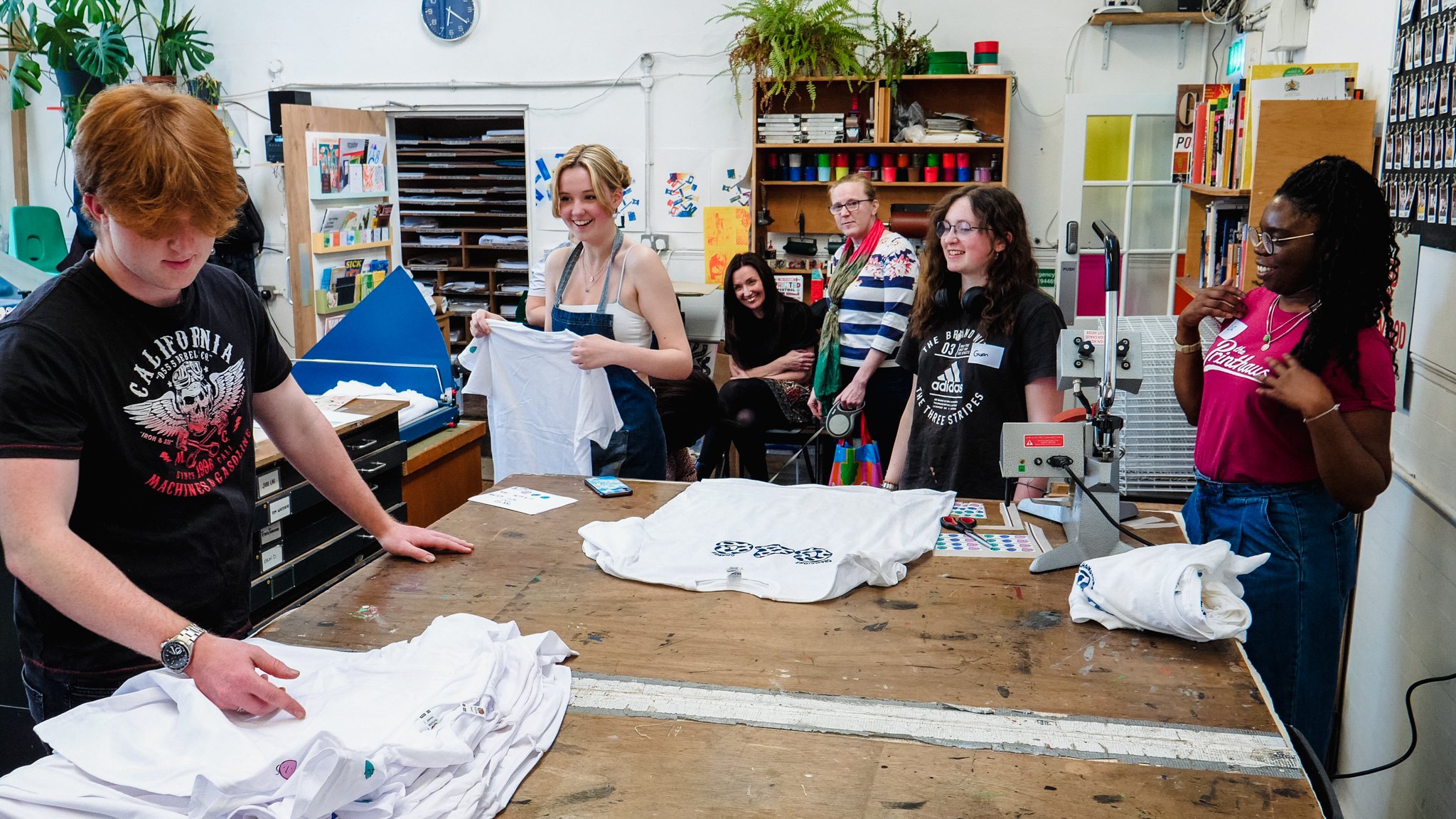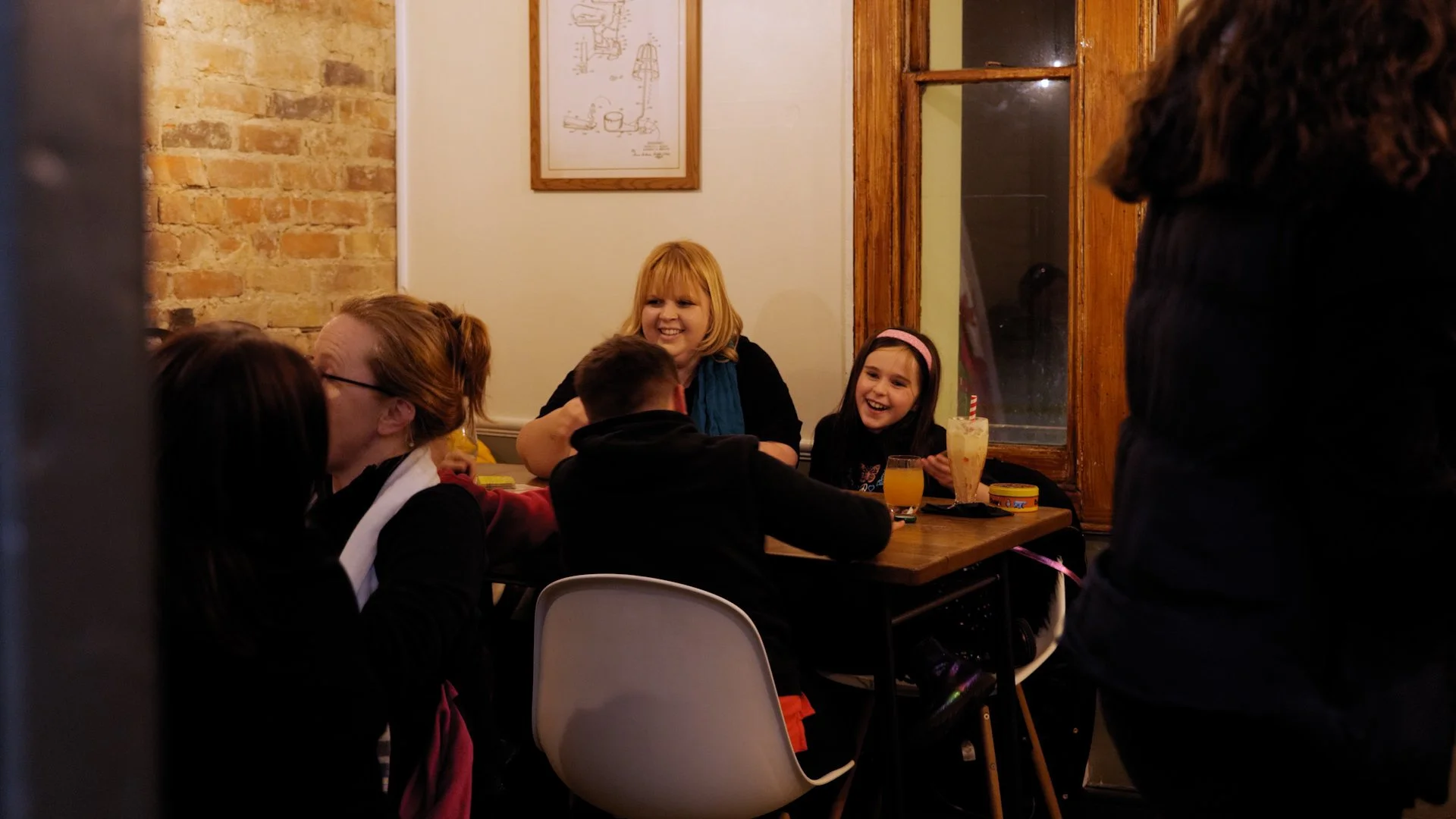What Works Best When Engaging With Children and Young People In A Co-Produced Mental Health Project
A Thematic Analysis of Field Notes from Year 1 of Young Person’s Project- Mental Health Manifesto, Action For Our Future. Funded by The National Lottery Community Fund and in partnership with Mental Health Foundation, Public Health Wales and Swansea University.
Prepared by Dr Michaela James, Swansea University and Hannah Spacey, Public Health Wales
Background
Funded by The National Lottery Community Fund and in Partnership with Mental Health Foundation, Swansea University and Public Health Wales, the Mental Health Manifesto is led by Single Parents Wellbeing (SPW) charity, based in Cardiff.
The project aims to engage with children and young people (10-25 years) from single parent households to co-design and deliver what they need to create positive pathways to a mentally healthy future. During the project, beneficiaries are given the opportunity to make
new connections, have their voices heard and build positive foundations for their future.
The project uses an action research approach, where beneficiaries shape the project content and delivery in real-time, ensuring that the project is tailored to the current needs of the people it seeks to serve. Over the last year, members of the SPW Youth Engagement team have run the Collect and Connect workshop series in Cardiff, which provides beneficiaries with weekly mental health and wellbeing engagement workshops that are based on the needs of the children and young people who attend.
The aim of this report is to provide an overview of what works best when engaging with children and young people in a mental health project, through a thematic analysis of SPW Youth Engagement staff field notes recorded during January – May 2023.
Methodology
Field notes were reviewed and coded, before being clustered into over-arching themes and analysed collectively. The main findings of the research are presented in this report. An inductive, grounded theory approach was implemented during the analysis of 24 field notes.
The analysis was completed by an external research officer from Swansea University who was funded to work on the project. Stages 4 – 5 were validated by a second researcher from Public Health Wales.
Initially, 26 codes were identified from the data. Codes with only >5 references were reviewed and recoded which generated 16 codes in total. Once coded, themes were searched for and identified in relation to the question; “What works best when engaging with children and young people in a co-produced mental health project?.” Four main themes were identified and are discussed in more detail in the following section.
Results
Four themes emerged from the codes:
Having compassionate conversation and open, honest conversations.
Providing a safe space will result in deeper levels of involvement.
Enjoyment is facilitated by the right people.
Relationships are essential to young people’s experiences.
1. Having compassionate conversation and open, honest conversations
From the sessions, it was evident that young people want the opportunity to be listened to and
heard through having open, honest conversations that are compassionate towards their experiences and emotions. When these conditions were met, young people were willing to engage in discussions with staff and were more likely to share experiences;
“Ask away, I'd rather someone ask. That doesn't happen often.” (CYP)
“I want to be able to get all the teachers and sit them down and explain my life.” (CYP)
“Spoke to me in depth about gaming and their love of the competitive play with others.” (Staff)
One of the key values of these conversations was compassion, and being shown empathy towards their situations:
“She gave me the time to just sit and chat. I needed that.” (CYP)
“Don’t shout.” (CYP)
“Be more understanding.” (CYP)
This was not just within conversations with the youth engagement team (adults in the room) but also, with their peers. One young person explained that teachers should “...teach kids how to be nice and understanding”, and this compassion will result in better relationships and safer environments. The engagement team noted:
“This is a sign of individual meetings I have had so far with the group building up a bond of trust.” (Staff)
Highlighting that a level of rapport needs to be established on a one-to-one level first before the expectation to engage and discuss can be had. There was also an element of peer-to-peer support in the sessions where trust is built amongst participants to drive further engagement with the sessions.
“One was helping the other one, reassuring her and explaining that neither of them liked socialising.” (Staff)
It is through this compassionate conversation that leads to the development of safe spaces where children and young people feel they can open up and discuss further.
By promoting compassionate conversations, children and young people can express their emotions, concerns, and needs more freely, leading to a greater sense of support and understanding when engaging in mental health projects.
2. Young people want safe spaces to involve themselves
During the sessions, aspects of areas that made young people feel safe were mentioned. For example, youth clubs with space, sensory spaces, informal areas with no agenda and spaces where they can be loud were characteristics mentioned. One young people stated that it was within the safety of these places that they could truly be themselves:
“I'm not out to my parents but I'm out here.” (CYP)
With this in mind, parental attendance was needed by younger participants but not by the
older ones. There were lots of observations made about the structure of the sessions, in particular aspects that would improve or benefit involvement. There was security around the idea of having a fixed space with added flexible spaces:
“Most of them like the idea of going out two times a month and staying in the office for the other 2 times and agree for the same time and day each week to help with their routine.” (Staff)
This helped with routine. Many young people liked the idea of routine and structure, knowing where they would be for certain events. For some, the idea of too many choices “stresses me out”, it would be mindful to be aware of this. Clear communication would benefit young people in knowing what to expect and being able to plan their attendance.
A staff member noted:
Overall, involvement had many different levels. From nurturing others; “...taught him the rules of the game and made him feel more comfortable.” to wanting to be directly involved in the set-up of the sessions;
“They both wanted to be a part of the whole process of getting the youth social up and running including going shopping with me and setting up.”
It is worth noting that involvement will mean different things to different individuals and so expectations of what it looks like for everyone need to be managed.
This is reflected in suggestions of the spaces to take forward. Some wanted online servers to be set up, cinema visits, bowling and even, the setting up of a social enterprise. It is important to acknowledge the aspects of this (some being digital, face-to-face, or requiring more of a leadership position).
“I was taken aback by the maturity of the group and knowledge they had about their routine and timetable.” (Staff)
By ensuring that such individuals feel secure and valued, they are more likely to engage actively in various activities, programs, and initiatives. This approach to inclusivity can empower them and provide opportunities for growth, development, and connection.
3. Enjoyment is facilitated by the right people
This builds on ideas from previous themes but the field notes highlight the important of the right
people facilitating the sessions that create compassionate conversations and safe spaces. There is a lot of observation about young people enjoying the sessions and engagement happening for the full session length:
“None of them were on their phones...” (Staff)
“We played one game (Monopoly) for the whole duration of the time and they all enjoyed it until the end.” (Staff)
The engagement team noted that a lot of time and energy was needed to monitor the sessions,
especially with younger participants so it may be beneficial to have multiple facilitators when working with different ages (although resources may not allow this). However, despite this observation, it appears the general experiences of sessions was very positive:
“Everyone loved it, were laughing away and got chatting to each other properly.” (Staff)
“I am able to better nurture the relationships between the young people by highlighting common interests and goals.” (Staff)
Observing the needs of the group when not verbally disclosed is important, therefore the right person with the right knowledge and training is important. Identification of behaviour such as self-harm and conversations with engaged parents were noted parts of the role:
Again, this demonstrates safety and compassion in the spaces. The field notes demonstrates reflective practice undertaken by the staff which is an important skill to be able to continuously facilitate and support the sessions. This involved exploring ideas that emerged that young people want and need:
“She had ADHD and autism and wants to ease her daughter into this youth social for social engagement. We discussed ways that could make this an easier jump for her.” (Staff)
This reflection is important in building sessions that are adapted to the groups wants and needs. Recognising that enjoyment is shaped by the right people is essential when designing programs or interventions for young people from single parent households. This helps to create an environment where young individuals feel heard, valued, and invested in activities.
4. Relationships are essential to young people’s experiences
Again, this theme emerges from the previous but incorporates the relationships with the other group members and other individuals in their lives. Age and gender were interesting points for
individuals with some “linking up nicely” and others asking for the groups to be split (particularly girls):
“The younger group liked and requested the opportunity to sit with “just girls” (Staff)
“Girls asked for a girls group in a quieter space, there were 16 people present at this event.” (Staff)
“...made friends with two girls she had never met before and invited us all to her performance of Les Mis.” (Staff)
“There was only one younger child age 11, and the eldest age 17 did a great job at taking him under his wing...” (Staff)
If the right dynamic is facilitated then the group can thrive, with relationships forming and establishing themselves:
This occurred inter-generationally however, there were some issues raised around “noise” and older children worrying that the space would become “dominated by kids.”. There were also some participants who explained how they felt anxious coming into these spaces with the potential of having no relationships/having to develop new relationships.
The point to raise here is whether weekly spaces in this way will continuously work for a few individuals who regularly engage rather than attracting new participants and engaging with many. While there were mostly positive experiences of the relationships in the spaces, some negatives were observed. Interestingly this happened with adults in the room, for example
managers who complained of lack of communication and parents who did not feel comfortable with questions or being asked to pay for activities:
“A divide came slightly with parents being expected, by their children, to fund the machines in the arcade.” (Staff)
Some of the group acknowledged their own roles in relationships but discussed this negatively saying they were “bratty”, “annoying”, have “no control” and “bottle things up”. It is worth noting how young people describe themselves and incorporate this into challenging negative perceptions and self-talk in order to allow their relationships with others to flourish and not seen themselves as a burden to others. This may stem from being from single parent households:
“We talked a bit about labels we all carry.” (Staff)
“Oh Yeh, we did about single parents in sex education in school. Women get pregnant young and the man leaves them.” (Staff)
Their experiences differed and the engagement staff did note that their awareness of routine and structure may be heightened because of this experience. Young people noted that it made conversations difficult with “ask your father or ask your mother” style answers and different ideas around gender and identity making them feel like they were in a SPH. However, for some
they stated it’s all they know and that actually, there were some benefits of being from single
parent households:
“There's magic in it though.. two Christmas dinners, winner!”(CYP)
It is evident that there are some stereotypes to being from a SPH which may impact on relationships and perceptions of relationships for young people. Going forward, it is essential to acknowledge how this will benefit young people’s experiences of not only the specific sessions but of the world they live in too.
Having supportive and nurturing relationships, both within and outside their immediate family, can significantly contribute to their well-being, resilience, and overall development. Efforts should be made to create opportunities for positive peer relationships, mentorship, and connections with caring adults who can provide guidance and support.
Recommendations
These findings hold valuable implications for young people from single parent households and suggest potential strategies and points to consider for the future and for the development of a mental health manifesto.
It is interesting that when asked how they wanted to be communicated to about the sessions, many said they wanted their parents to be told and staff acknowledged that reminders need to be sent out. There is an element of seeking compassion around taking ownership of their day-
to-day life and needing some guidance and reassurance from adults to attend the sessions. For example, it may be that reminders will let them know that they won’t be the only one to attend or that the session is still going on in the same place.
It is important to acknowledge that the young people are experts of their lives, they know what they want and need, and this observation articulates this well. Listening to the wants and needs of young people helped facilitate safe spaces where involvement could happen.





